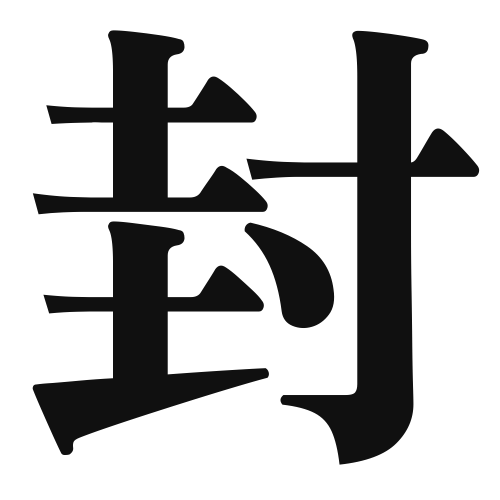1. Overview of Meaning
The kanji “封” (pronounced “fū” in Japanese) generally means “seal” or “envelope.” It conveys the idea of enclosing or securing something, often used in the context of letters, documents, or packages.
2. Formation and Radical
Formation of the Kanji: The kanji “封” is a compound character (会意文字) that combines elements to convey its meaning. It consists of the radical “亻” (person) and “封” (to seal), suggesting the action of a person sealing something.
Radical: The radical of “封” is “亻,” which relates to human actions or characteristics.
3. Examples of Usage
Common Words and Phrases: Some frequently used words that include “封” are:
- 封筒 (ふうとう, fūtō) – envelope
- 封印 (ふういん, fūin) – seal, especially in the context of sealing something securely
Example Sentences in Daily Conversation:
- 手紙を封筒に入れました。 (てがみをふうとうにいれました。) – I put the letter in an envelope.
- この書類には封印が必要です。 (このしょるいにはふういんがひつようです。) – This document requires a seal.
4. Synonyms and Antonyms
Similar Kanji: A similar kanji is “閉” (へい, hei), which means “close” or “shut.” While both involve the idea of enclosing, “封” specifically refers to sealing something, whereas “閉” refers to the act of closing.
Antonyms: An antonym of “封” is “開” (あけ, ake), which means “open.” This represents the opposite action of unsealing or opening something that was previously closed.
5. Cultural and Historical Background
Relation to Japanese Culture: The concept of sealing is significant in Japanese culture, especially in formal communications and traditional practices. Seals (hanko) are often used in place of signatures for official documents.
Proverbs and Idioms: One common idiom is “封を切る” (ふうをきる, fū o kiru), which means “to break the seal,” often used to describe the act of opening a letter or package, symbolizing the beginning of something new.
